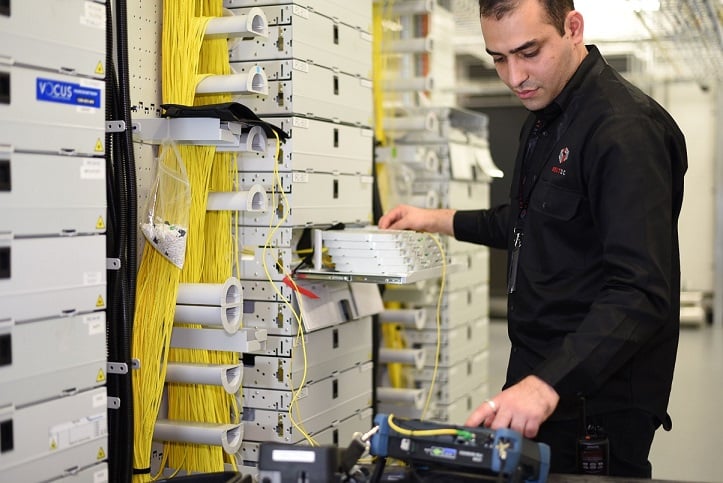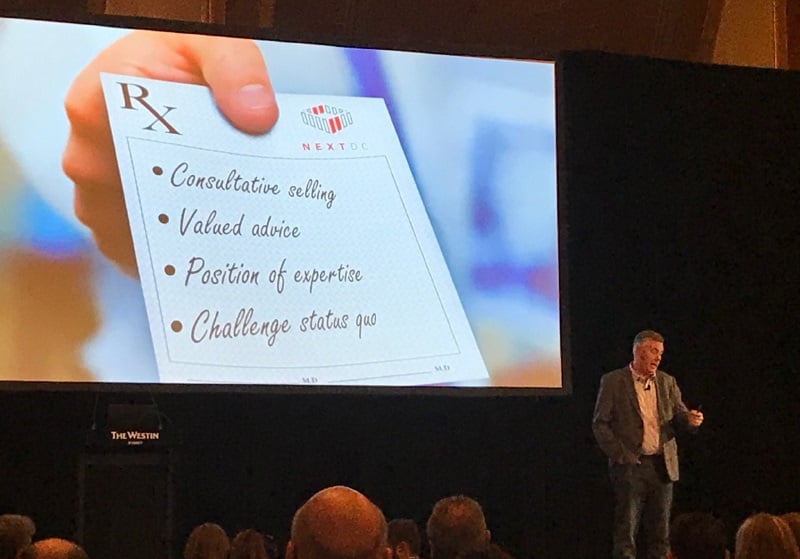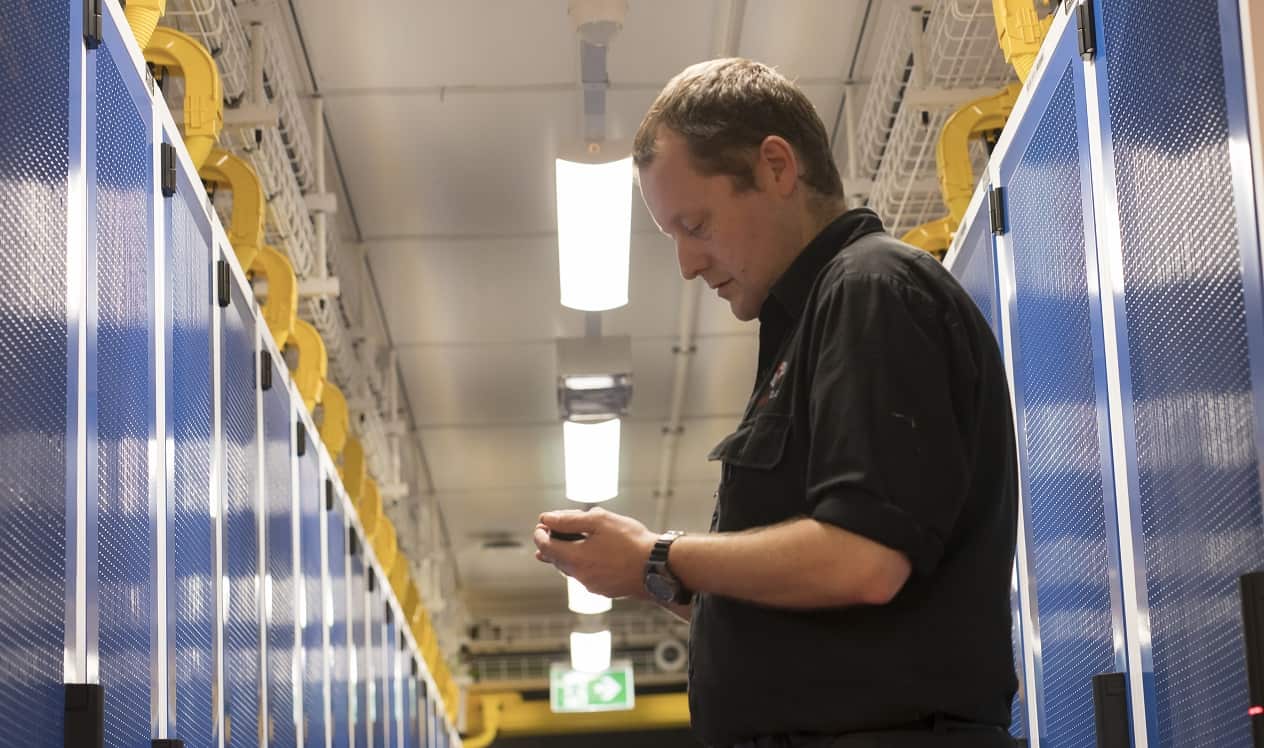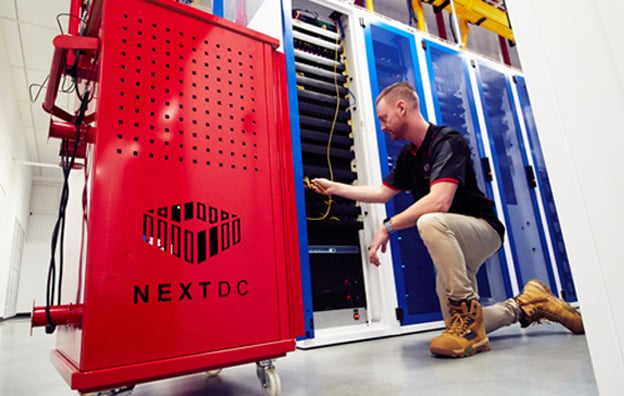How did NEXTDC deliver the first Asia Pacific colocation data centre with the exceptional fault tolerance to be awarded Tier IV Certification of Constructed Facility (TCCF) from Uptime Institute? To find out, download the new whitepaper Power, Secure, Connect: NEXTDC’s new-generation data centres
Almost every business we engage with today is working on a cloud transformation project of some sort, and we have noticed that almost all of them are pursuing a hybrid cloud strategy.
The need to take advantage of cloud, balanced by privacy concerns and legacy infrastructure, has seen hybrid deployments become the industry standard: public for non-sensitive workloads; private for more sensitive data; and traditional on-premise for highly sensitive workloads.
Many of our customers still rely on core systems built on legacy technology that can’t be virtualised for reasons of practicality or security, and isn’t going to be replaced in the near future. If they are not integrated with the company’s chosen cloud platforms, these internally-hosted applications can restrict transformation efforts, such as improving customer experience.
Where the hybrid cloud lives
One of the key market needs NEXTDC fulfils is as a hybrid IT environment of user-owned and managed service infrastructure and access to private and public clouds. This strategy creates a reliable, high-performance, managed environment outside your internal systems to link the elements of your IT service together and benefit from significantly reduced latency and connectivity costs.

NEXTDC offers our customers the option of physical or virtual connections to their service providers, including a direct cross-connect between NEXTDC facilities in the same city (i.e B1 to B2 in Brisbane).
“Hybrid cloud is what goes on in our buildings every day,” says Steve Martin, NEXTDC’s General Manager of Channels. “Many clients have a reliance on some of their own IT systems (such as legacy systems, critical systems) that they don’t want to outsource to a cloud. But there are other aspects of their IT where there is a benefit to do so. The result is a multitude of hybrid models where some things are connected to a public cloud, some to a private cloud, and others (for example back up) are being delivered by specialised service providers.”
“At present, we see about 50% of total IT workloads being outsourced with the other 50% remaining in-house. However, we expect the move toward the cloud, or toward outsourcing, will continue to gain momentum.”
Steve says there is no easy model for defining the optimal hybrid mix. It varies on a customer-by-customer basis and largely depends on where an organisation sees its strategic advantage.
“That’s why we recommend a one-on-one conversation with a client about what they are trying to achieve,” says Steve. “We can then provide some advice and direction; perhaps recommend the partners we feel might be best suited to helping them on their journey, as they move into a hybrid cloud environment and take advantage of services in data centres such as NEXTDC’s.”

Steve Martin, NEXTDC’s General Manager of Channels, delivers a webinar for CompTIA ‘Hybrid Complexity = Channel Opportunity’ about challenging customers’ perception of what they need.
4 tips for getting the most out of your hybrid solution:
- Discuss specific objectives with your potential IT partners and what matters most to your organisation: such as all set up and operational costs, an auditing process, uptime and outage reporting, and the likelihood of future upgrades.
- Ask for examples of how they’ve helped organisations like yours, and to see their facilities in action. This will give you an insight into how well a provider is resourced and their level of knowledge and experience.
- Review the services of a range of data centres to see if they satisfy your specific requirements and provide an uptime guarantee or certification, as well as a comprehensive breakdown of all costs and charges so you avoid any unwelcome surprises. Look for a high level of security with 24/7 access and onsite technicians in case of emergency, plus easy connectivity to a broad selection of clouds and telcos.
- Ensure you have visibility of operational performance to keep track of your partner’s promises for greater efficiency and reduced costs. Especially how the key service benefit will be measured and reported. This could be the speed and reliability of a regular after-hours backup; website capacity that adjusts accurately to peak and quiet periods; or being able to check that the rack temperature at the data centre matches your SLA.
FIND OUT MORE
Please Contact Us to start a one-on-one conversation, or to find out more about how NEXTDC Data Centre as-a-Service can provide you with the ideal hybrid cloud environment.


